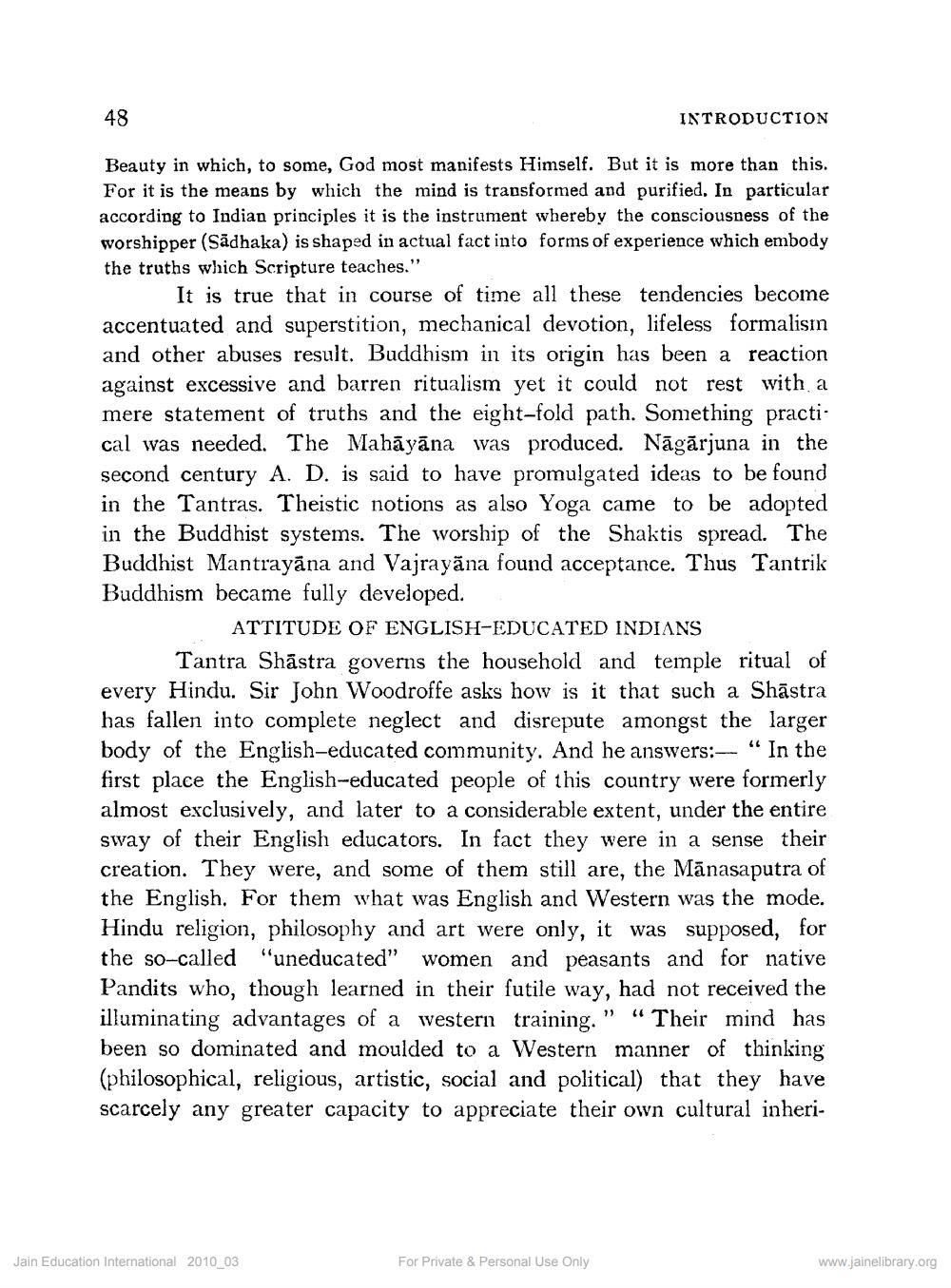________________
48
INTRODUCTION
Beauty in which, to some, God most manifests Himself. But it is more than this. For it is the means by which the mind is transformed and purified. In particular according to Indian principles it is the instrument whereby the consciousness of the worshipper (Sadhaka) is shaped in actual fact into forms of experience which embody the truths which Scripture teaches."
It is true that in course of time all these tendencies become accentuated and superstition, mechanical devotion, lifeless formalisin and other abuses result. Buddhism in its origin has been a reaction against excessive and barren ritualism yet it could not rest with a mere statement of truths and the eight-fold path. Something practical was needed. The Mahāyāna was produced. Nāgārjuna in the second century A. D. is said to have promulgated ideas to be found in the Tantras. Theistic notions as also Yoga came to be adopted in the Buddhist systems. The worship of the Shaktis spread. The Buddhist Mantrayāna and Vajrayāna found acceptance. Thus Tantrik Buddhism became fully developed.
ATTITUDE OF ENGLISH-EDUCATED INDIANS
Tantra Shastra governs the household and temple ritual of every Hindu. Sir John Woodroffe asks how is it that such a Shāstra has fallen into complete neglect and disrepute amongst the larg body of the English-educated community. And he answers:--- "In the first place the English-educated people of this country were formerly almost exclusively, and later to a considerable extent, under the entire sway of their English educators. In fact they were in a sense their creation. They were, and some of them still are, the Mānasaputra of the English. For them what was English and Western was the mode. Hindu religion, philosophy and art were only, it was supposed, for the so-called "uneducated" women and peasants and for native Pandits who, though learned in their futile way, had not received the illuminating advantages of a western training.” “Their mind has been so dominated and moulded to a Western manner of thinking (philosophical, religious, artistic, social and political) that they have scarcely any greater capacity to appreciate their own cultural inheri
Jain Education International 2010_03
For Private & Personal Use Only
www.jainelibrary.org




